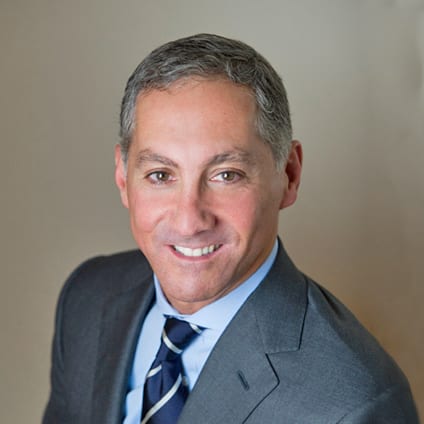Anxiety in a child can look like many different kinds of symptoms. Anxious children may have trouble sleeping, complain about stomachaches, avoid certain places or things, cling to parents, have trouble focusing in school, or have extreme tantrums when they get overwhelmed.
Why Childhood Anxiety Often Goes Undetected (and the Consequences)
Why Childhood Anxiety Often Goes Undetected (and the Consequences)
Kids often keep their worries hidden, or express them in ways that are hard to read
Clinical Expert: Roy Boorady, MD
en EspañolWhat You'll Learn
- What does childhood anxiety look like?
- Why is it difficult to diagnose childhood anxiety?
- How is childhood anxiety treated?
Quick Read
All kids worry sometimes. But when worry makes it hard for them to participate in daily life, they may have an anxiety disorder. Because anxiety often affects a child’s thoughts and feelings more than it affects their behavior, it can be hard to spot. It’s also possible for a child to be generally happy but still so anxious that it interferes with some aspect of their life, like school or socializing.
Common outward signs that a child might be anxious include troubling sleeping, lots of stomachaches or headaches, clinging to parents, and throwing tantrums. Some of these symptoms may look like oppositional behavior, but really the child is struggling to deal with overwhelming worry. Anxiety can also make it hard to focus or sit still, so it can be hard to tell anxiety apart from ADHD.
Untreated anxiety in childhood can lead to more anxiety in adulthood, so it’s important to get anxious kids help. The good news is that childhood anxiety is very treatable. Most anxious kids respond well to a kind of therapy called cognitive behavioral therapy (CBT). Medication can also help. By getting treatment early, kids can learn to manage their worries and keep anxiety from interfering with their lives.
Full Article
5 min read
It is a natural thing to have anxiety. It is normal for very young children to be afraid of the dark, or for school-age children to worry about making friends. But sometimes normal childhood anxiety morphs into something more serious. A young girl might be afraid to ever leave her mother’s side, even to get on the school bus, or an anxious boy may need frequent reassurance over things that happened a month ago.
Kids can develop an anxiety disorder. Eventually the disorder can start interfering with a child’s friendships, life at home, and work in school. Even so, the anxiety still might not be noticeable to parents and caregivers.
For one thing, being anxious doesn’t necessarily mean that you can’t function — it might just make some kinds of functioning more difficult. A homework assignment that should take 20 minutes might take an hour, for example. With anxiety, it’s important to remember how internal it is. It dominates a child’s thoughts, but it might not be obvious to the people around them.
It’s also worth noting that in my work as a childpsychiatrist
I see a lot of anxious kids who are still basically happy and enjoying life. Maybe they are only struggling in certain situations, which may make their anxiety all the easier to overlook.
Outward signs of childhood anxiety
When anxiety is expressed outwardly, there can be a wide range ofsigns and symptoms,
which often complicates identification.
- Kids may have trouble sleeping or complain about stomachaches or other physical problems.
- They may become avoidant and clingy around parents or caregivers.
- They might also have trouble focusing in class or be very fidgety — I like to say, “Not all that moves is ADHD,” even though that’s often the first thing we suspect from a hyperactive or inattentive child.
- They may have explosive outbursts that make people think they areoppositional,
- oppositional
- Disobedient and often hostile behavior directed towards authority figures.
The words we use to describe our anxiety can distract, too. People use a lot of different words to describe what they’re feeling — kids might say they are self-conscious, shy, apprehensive, worried, or afraid. These words do a good job capturing what they are struggling with, but fixating too much on them can distract from the fact that anxiety is underlying factor — not some personal failure in personality.
Consequences of untreated anxiety
If you look at the prevalence rates ofanxiety disorders,
you’ll see that the numbers rise as children get older. That makes sense because anxiety disorders arecognitive,
so they develop as our cognitive ability develops. Separation anxiety, for instance, develops early, whereassocial anxiety disorder
usually develops after puberty. A study of more than 10,000 kids, interviewed by trained professionals, shows that more than 30 percent had developed an anxiety disorder some time before they were 18.
Anxiety frequently recurs, too, and childhood anxiety is often a precursor for adult anxiety, especially for kids who don’t receive treatment. The same study showed that 80 percent of kids with anxiety do not get treatment. Many adults seeking help for anxiety remember feeling anxious when they were younger, which means that they’ve been struggling for a long time and could have benefited from treatment as children.
Avoidance reinforces anxiety
Kids with untreated anxiety also begin to develop poor coping skills. A common example is avoidance — people who are very anxious will try to contain it by avoiding the thing that makes them anxious. It’s a short-term solution that unfortunately reinforces their anxiety instead of acclimating them to it.
Similarly, untreated anxiety can lead to lower self-esteem, academic dysfunction, and self-medication through substance abuse.
Anxiety leads to depression
People living with anxiety for extended periods of time are also more likely to develop depression. It isn’t uncommon to meet patients who come seeking treatment for depression or depressive symptoms and it turns out that they have been dealing with lifelong anxiety as well. In cases like this people need treatment for anxiety and depression.
Fortunately, we know a lot about how to treat anxiety. It responds very well to cognitive behavior therapy, and there are medications that work, too. Getting help makes a big difference, and treatment doesn’t need to be a lifelong thing — although its positive effects will be.
Frequently Asked Questions
This article was last reviewed or updated on November 20, 2024.

